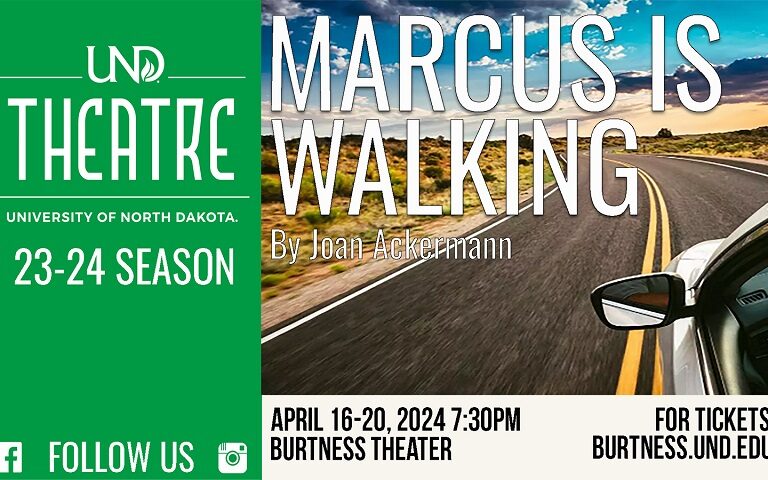UND employee travel request and approval process detailed
On March 11, 2020, all UND business travel was suspended, with any exceptions requiring Presidential approval. UND is now updating its travel suspension to allow more flexibility in travel as long as it complies with the guidelines below. This document will be updated as more or less restrictive measures are necessary. All updates will apply to any previously approved travel that has not yet taken place:
- International travel is still suspended.
- Approval is required for all non-international travel including air travel, although Presidential approval is no longer necessary; approval levels will be determined by the appropriate Vice President, CEO, or Athletic Director.
- All travel will follow the guidelines below.
Travel Request and Approval Process
- Employee reviews this document to ensure employee is able to comply with the mitigation strategies and self-assessment.
- Employee completes the “Travel Plan and Approval” template and routes for approval (see the Approval Routing Tab on the template). If more than one employee is traveling for the same field/project work, the project manager may complete the travel and approval template for all travelers; however, all travelers must receive and review this document. The plan must include any exceptions to, and alternate plans for, the mitigation strategies outlined below.
- A copy of the approved plan is sent to the area VP/CEO/Director.
- Dean/or equivalent maintains a copy of the approved travel plan.
Overall
- All mitigation strategies must be followed, as well as all health and safety best practices.
- Any student concern for safety, even if resolved by a supervisor, must be reported to the Dean/EERC VP immediately for review and then reported to the area VP/CEO/Director.
- All personnel must review and follow UND’s “Required Procedures for Employees” (sent on 4/7/20), all other directives posted on UND’s Coronavirus Updates blog (available here: http://blogs.und.edu/coronavirus/cases/), and any additional Department-specific procedures or guidelines. Departments are responsible to communicate any additional procedures/guidelines to affected personnel.
- The travel destination, regardless of the mode of transportation, may require additional mitigation, such as self-isolation upon arrival or return. If traveling out of state, travelers and approvers should review the state or local government guidelines for travel restrictions or isolation requirements. A link to state/territorial health agency websites can be found here: https://www.cdc.gov/publichealthgateway/healthdirectories/healthdepartments.html.
- If employee becomes ill or begins to show any symptoms of the COVID-19 virus while on travel, the employee will isolate and immediately inform the supervisor/field supervisor. See the self-assessment section below.
- Travel approval is subject to revocation at any time at the discretion of the President/VP/CEO/Athletic Director.
Mitigation Strategies
Exceptions and alternate strategies must be identified in the Travel Plan and Approval template.
Before Departure
- Maximum of two persons/vehicle. If more than one person is in a vehicle, face coverings (cloth or surgical) will be worn by both individuals, unless cohabiting individuals.
- Temperature screening (self-taken) and self-assessment will be performed prior to departure (see self-assessment section below). If temperature is 100.4°F or higher, or any other COVID symptoms are being experienced by the employee, the employee will not travel and will report situation to the employee’s supervisor/field supervisor.
While on the Road
- Face coverings (cloth or surgical) are required to be worn in public areas where the 6-foot CDC guidance cannot be complied with between individuals.
- Wear gloves when filling up at gas stations to minimize movement of virus.
- Practice good hygiene (frequent hand washing, no hand shaking, sanitizing vehicle surfaces).
- Take rest breaks as needed, self-assess, and assess others. STOP if tired.
- Travel under the assumption that restaurants may be closed and grocery stores will have modified hours that do not necessarily align with work/travel hours. Individuals will stock their own personal supplies as part of social distancing practices (e.g., food, snacks, drinks, etc.).
- Do not share clothing (face covering/gloves, etc.) or food (chips, snacks, drinks).
While Working Off-Site
- Work autonomously as much as possible; maintain >6 feet of physical distancing with coworkers whenever possible.
- Work out of vehicle or in dedicated rooms whenever possible.
- Frequently sanitize work areas and equipment.
- Minimize contact with and wear a face covering when encountering/working with anyone not on the work/research team (e.g., gas station customers and employees, landowners, subcontractor personnel on-site, time in command centers or group areas.)
- Enter other buildings only when necessary.
- Employees should assume that activities may take more time or require new approaches:
- Incorporate extra time to complete tasks in your daily planning.
- Schedule regular break times to ensure employees stay rested. Social distancing will be maintained during all group break times.
- Pause and assess unfamiliar situations as they arise, mentally step through the activity, perform a risk identification, and implement pertinent remediation actions.
- Face covering and gloves will be worn by employees if working closer than 6 feet from each other.
